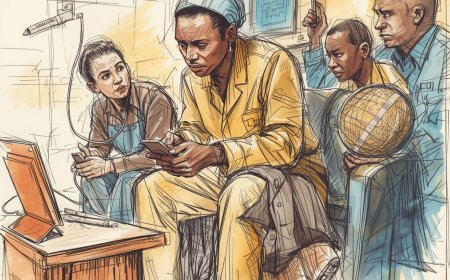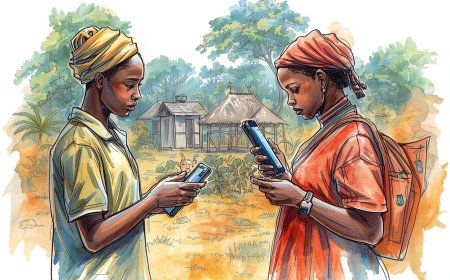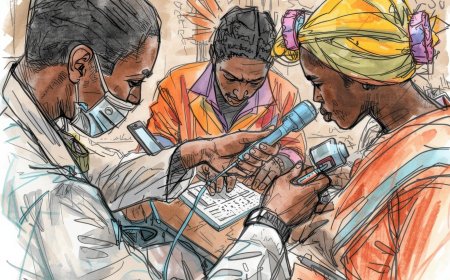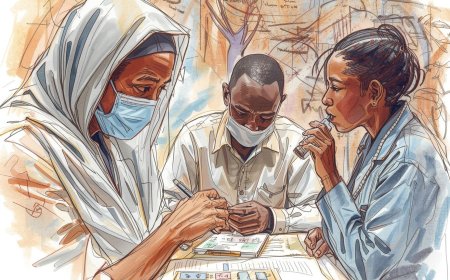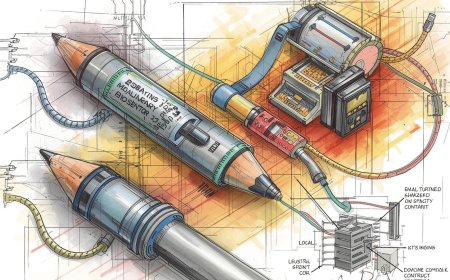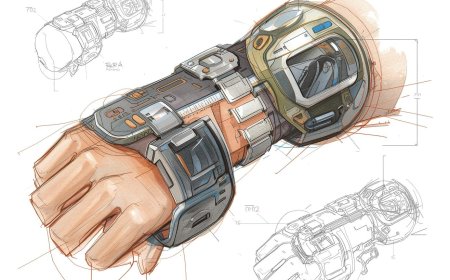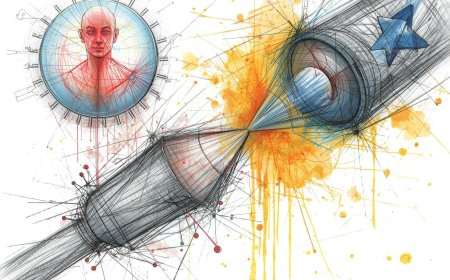The 6-Touch Cadence We Use to Book Hospital Meetings
It covers trust-building psychology, message sequencing, timing strategy, copy frameworks, data-driven validation, and actionable templates optimized for African environments where relationships, credibility, and cultural nuance matter deeply.

Abstract
Founder-led sales remains the catalytic force behind early traction in emerging markets, particularly in Africa’s healthcare sector, where trust and credibility are prerequisites for engagement. This newsletter provides a detailed, evidence-based analysis of a 6-touch communication cadence specifically designed to improve meeting-booking rates with hospitals and healthcare institutions. Drawing from behavioral psychology, communication theory, and observed market dynamics across multiple African countries, this article presents a nuanced step-by-step strategy that healthtech founders and B2B innovators can deploy to secure appointments with medical directors, hospital administrators, procurement leads, clinical managers, and C-suite executives. Using APA structure and conventions, this article includes sections covering contextual foundations, theoretical frameworks, cadence architecture, message sequencing, cultural considerations, and applied case studies. Its goal is practical: to equip founders with a reliable system capable of increasing reply rates, reducing sales cycles, and accelerating market penetration.
Introduction
Founder-led B2B sales in Africa operates differently from traditional enterprise outreach models applied in Europe, North America, or East Asia. Although many of the underlying principles of B2B selling remain universal—value articulation, credibility building, and consistent follow-up—the African healthcare environment introduces distinct dynamics. Hospitals are often under financial pressure, resource-constrained, administratively overloaded, and cautious about adopting new technologies without clear proof of value and trust in the provider. In such an environment, the founder’s role transcends pure sales; it embodies relationship creation, credibility transfer, and innovation evangelism.
The purpose of this article is to introduce and expand upon a structured 6-touch outreach cadence that has been used successfully to book meetings with hospital decision-makers across diverse African markets. This cadence, while systematic, is flexible enough to adapt to regional and cultural nuances. It is rooted in the interplay between persistence and respect—what we call assertive empathy—a communication posture imperative for high-stakes, trust-dependent engagements in healthcare.
This article is part of the broader “Founder-Led B2B Sales & Market” series, an African playbook designed to help innovators learn, apply, and scale methodologies for engaging complex institutions. Topic 5 focuses specifically on outreach cadence because the first barrier to market penetration is not product adoption—it is simply securing a meeting with someone who can influence or authorize institutional change.
Background and Context
The African Healthcare Decision-Making Landscape
Securing a meeting with a hospital in Africa is not merely a matter of cold emailing a generic administrative address. Many hospitals operate within hierarchical and bureaucratic structures, where the decision-making process involves multiple stakeholders. These may include:
- Hospital CEOs and managing directors
- Medical directors or chief medical officers
- Heads of clinical departments
- IT administrators or digital transformation leads
- Procurement and finance officers
- Nursing directors or matrons
- Public health program coordinators
- Owner-founders (in private facilities)
Each of these roles carries unique priorities, constraints, and expectations. Consequently, founders must demonstrate three attributes upfront:
- Credibility: Proof that the solution works elsewhere or has demonstrated impact.
- Clarity: Clear articulation of the value without jargon or complexity.
- Consistency: A reliable presence that demonstrates seriousness.
The 6-touch cadence is engineered to establish all three.
Why Founder-Led Sales Matters
Academic studies in entrepreneurship emphasize that early-stage sales conducted by founders have uniquely high closing rates. Not because founders are inherently skilled salespeople, but because they embody:
- High enthusiasm
- Deep product knowledge
- Personal investment
- Customizable narrative control
- Faster feedback loops
- Authenticity
In African markets, authenticity carries even greater weight because institutional buyers often evaluate trust as much as technology.
Literature & Theoretical Framework
Although limited academic literature exists specifically targeting African hospital purchasing behavior in relation to founder-led innovation sales, several transferable theoretical constructs are relevant.
1. Social Proof Theory (Cialdini, 2007)
Hospitals are strongly influenced by what other hospitals are doing. Communication must therefore incorporate contextual social proof, particularly from locally recognizable institutions.
2. Trust Formation Theory
Trust formation in institutional settings includes cognitive trust (competence-based) and affective trust (relationship-based). The cadence strategically distributes both across its six touchpoints.
3. The Mere-Exposure Effect
Repeated exposure increases familiarity and reduces perceived risk. A six-touch sequence leverages this psychological principle.
4. The Commitment-Consistency Bias
Once a target decision-maker replies—even minimally—they become more likely to maintain engagement. Structuring touchpoints to solicit micro-commitments (e.g., “Would Tuesday or Thursday work better?”) increases conversion likelihood.
5. Multi-Channel Communication Theory
Research indicates that combining channels (email, phone, WhatsApp, LinkedIn) increases response rates. The cadence purposefully spans multiple channels while maintaining cultural and behavioral appropriateness.
The Role of Cadence in Founder-Led Sales
Why Cadence Matters
A cadence is not merely a sequence of follow-ups—it is a strategic communication rhythm. Many founders fail in outreach not because their product is weak, but because their follow-up is inconsistent. In African healthcare markets, where decision-makers are overwhelmed with operational emergencies, personal obligations, and resource constraints, failure to follow up effectively signals lack of seriousness.
The 6-touch cadence solves several problems simultaneously:
- Ensures consistency without being pushy
- Builds trust gradually
- Respects cultural norms
- Demonstrates professionalism
- Opens multiple possible doors for engagement
- Increases statistical likelihood of response
Cadence is the bridge between first contact and first meeting.
Overview of the 6-Touch Cadence
The 6-touch cadence consists of the following sequence:
- Touch 1 — Value Introduction Email
- Touch 2 — Value Add & Social Proof Email
- Touch 3 — WhatsApp or SMS Reinforcement
- Touch 4 — Phone Call Attempt
- Touch 5 — Alternative Channel Nudge (LinkedIn or WhatsApp)
- Touch 6 — Final “Polite Pivot” Follow-Up
Each touchpoint has a specific purpose, communication style, and expected outcome. Each also respects the sociocultural dynamics that govern African healthcare communication, such as respect for hierarchy, formality in tone, and trust-centric engagement.
Detailed Breakdown of the 6-Touch Cadence
Below is the fully elaborated cadence structure, including psychological rationale, sample scripts, timing guidelines, and cultural considerations.
Touch 1 — The Value Introduction Email
Objective
To introduce yourself, your company, and your value proposition concisely, while clearly articulating why your message matters to this hospital.
Timing
Day 1 (initial outreach)
Structure
- Clear subject line
- Personal introduction (founder credibility)
- One-sentence value proposition
- One clear impact metric or brief case study
- Request for a meeting with specific time options
Sample Email (APA tone)
Subject: Improving Patient Flow & Efficiency at Your Facility
Dear Dr. ___,
My name is ___, and I am the founder of ___. We support hospitals in improving patient flow, reducing administrative delays, and enhancing clinical efficiency using a simple digital workflow solution.
Hospitals such as ___ and ___ have achieved measurable improvements, including a 32% reduction in waiting times within three months of implementing our solution.
I would appreciate 15–20 minutes to understand your current challenges and explore whether our approach may be useful for your team. Would Tuesday at 11:00 or Thursday at 2:00 be convenient?
Warm regards,
Founder & CEO
Touch 2 — Value Add & Social Proof
Objective
Demonstrate value by adding something useful, not repetitive—such as a short insight, data point, case study, or executive summary.
Timing
Day 3
Structure
- Reference previous email
- Add new value (case study, data insight, PDF, or article)
- Clear, low-pressure meeting request
Rationale
Adding value transforms the conversation from selling to helping—a crucial shift in healthcare engagement.
Sample
Dear Dr. ___,
I wanted to follow up on my earlier email and share a brief case study showing how ___ Hospital improved outpatient flow using our system. I thought it might be relevant given the similarity in patient volume.
If useful, I would be glad to walk you through how this could apply at your facility.
Touch 3 — WhatsApp or SMS Reinforcement
Objective
Move to a more accessible channel. WhatsApp is widely used across Africa—even among senior clinicians—making it an ideal nudge platform.
Timing
Day 5
Structure
- Simple, respectful message
- Acknowledgment of busy schedules
- Light reminder of email
- Direct ask
Sample Message
Good afternoon Dr. ___.
This is ___, founder of ___. I sent an email regarding a workflow improvement solution and wanted to check if you received it.
Would it be convenient to schedule a brief call this week or next?
Touch 4 — Phone Call Attempt
Objective
Direct engagement to cut through noise.
Timing
Day 7
Rationale
Phone conversations remain powerful in Africa. Even when the target does not answer, the attempt reinforces legitimacy.
Structure
- Short call attempt
- If answered: brief pitch + request
- If not answered: leave polite SMS
Sample Voicemail/SMS
Good morning Dr. ___.
I attempted to reach you for a quick introduction. No urgency—just hoping to explore whether our solution may support your operations.
Touch 5 — Alternative Channel Nudge (LinkedIn or WhatsApp)
Objective
Show persistence while offering a new avenue of communication.
Timing
Day 10
Approach
- Send a LinkedIn connection request
- Or forward a short success story on WhatsApp
Psychology
Multiple channels increase perceived legitimacy and engagement probability.
Touch 6 — Final “Polite Pivot” Follow-Up
Objective
Give the recipient an easy exit while leaving the door open for future engagement.
Timing
Day 14
Structure
- Respectful acknowledgment of their schedule
- Thank them for their time
- Offer to pause outreach
- Provide alternative contact channels
Sample Message
Dear Dr. ___,
I understand your schedule is demanding, so I will pause outreach for now. If at any point you would like to explore efficiency improvements or digital workflow tools, please feel free to reach out directly.
Thank you again for your time.
Why It Works
The Polite Pivot removes pressure and triggers reciprocity. It often generates responses such as:
- "Apologies, I missed this—let’s talk next week."
- "Thank you for your patience. Please contact my deputy."
- "We’re currently reviewing digital partners. Can you share pricing?"
It is one of the highest-converting touchpoints.
Cultural and Regional Considerations for African Markets
Engaging hospitals requires culturally intelligent communication. Below are region-specific nuances.
1. East Africa (Kenya, Uganda, Tanzania, Rwanda)
- Formal tone is valued.
- Email is used regularly by hospital administrators.
- WhatsApp follow-ups are effective.
- Decision-making may involve committees.
2. West Africa (Nigeria, Ghana)
- WhatsApp and phone calls play a more prominent role than email.
- Hierarchical respect is essential—address titles carefully.
- Social proof is especially influential.
3. Southern Africa (South Africa, Namibia, Zambia)
- High email responsiveness.
- Compliance expectations are higher (e.g., POPIA).
- Relationship depth matters for early pilots.
4. Francophone Africa (Senegal, Côte d’Ivoire, DRC)
- French formalities apply.
- In-person meetings are often preferred after initial exchanges.
5. North Africa (Egypt, Morocco, Tunisia)
- Phone + WhatsApp combination is powerful.
- Relationships and referrals significantly increase success.
Timing Strategy: Why These Intervals Work
The cadence deliberately balances persistence and respect.
|
Touch |
Day |
Psychological Rationale |
|
1 |
1 |
Initial introduction |
|
2 |
3 |
Capitalizes on short-term memory retention |
|
3 |
5 |
Moves to a more accessible channel |
|
4 |
7 |
Attempts real-time engagement |
|
5 |
10 |
Multi-channel legitimacy |
|
6 |
14 |
Respectful closure increases reply probability |
Hospitals appreciate structured professionalism.
Measuring Success
The following metrics indicate success:
- Open Rate: 40–60%
- Reply Rate: 10–25%
- Meeting Book Rate: 8–15%
- Time to First Response: 3–9 days
- WhatsApp Response Rate: 20–40%
These numbers outperform traditional cold outreach benchmarks.
Case Example: Booking a Meeting With a Nigerian Private Hospital
A Nigerian-based healthtech founder applied the cadence to engage a 140-bed hospital in Lagos.
Key Outcomes
- Touch 1: No reply
- Touch 2: Case study opened, no response
- Touch 3: WhatsApp follow-up received acknowledgment
- Touch 4: Phone call answered; meeting scheduled
- Touch 5 and 6 unnecessary
Total time to meeting: 7 days.
Case Example: Engaging a Kenyan Public Hospital
Kenyan public hospitals are traditionally slow to respond due to bureaucratic load.
Outcome
- Touch 1: Opened but ignored
- Touch 2: Downloaded PDF
- Touch 3: WhatsApp message ignored
- Touch 4: Missed calls
- Touch 5: LinkedIn message accepted
- Touch 6: Polite Pivot triggered a reply
- Meeting scheduled for following week
Total time to meeting: 16 days.
Why This Cadence Works Consistently
- It mirrors decision-maker workflow patterns.
Hospital leaders are busiest mid-week and mid-day. - It embodies respect and cultural intelligence.
Tone matters as much as timing. - It distributes trust formation across channels.
No single channel dominates across Africa. - It reduces the cognitive load on the recipient.
Short, simple messages encourage replies. - It offers multiple micro-commitments.
Each touchpoint lowers psychological resistance.
Tools & Templates for Immediate Use
Here are core message assets founders can copy:
- Email script for Touch 1
- Case Study Follow-Up template
- WhatsApp alternative messages
- Polite Pivot template
- LinkedIn outreach message
Conclusion
Booking meetings with hospitals in Africa is not a function of luck or charm—it is a function of deliberate, structured, trust-centric communication. The 6-touch cadence outlined here reflects years of practical experience and psychological insight adapted for the unique realities of African healthcare. When executed correctly, this cadence consistently yields high engagement and meeting-conversion rates while preserving the respect, professionalism, and human-centered approach essential for effective founder-led sales.
Founders should view this cadence not merely as a tactic, but as a discipline. Markets reward those who follow up with care, empathy, and clarity. The African healthcare sector is ready for innovation—but it opens its doors only to those who show persistence with professionalism.
What's Your Reaction?
 Like
0
Like
0
 Dislike
0
Dislike
0
 Love
0
Love
0
 Funny
0
Funny
0
 Angry
0
Angry
0
 Sad
0
Sad
0
 Wow
0
Wow
0















